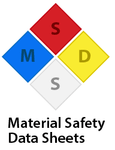Clinical significance of the serum IgM and IgG
Coronavirus disease-2019 (COVID-19) caused by severe acute respiratory syndrome Coronavirus 2 (SARS-Cov-2) is a serious infectious disease with high mortality. Since SARS-Cov-2 can be transmitted through the respiratory tract, early diagnosis is of great importance to cut off the transmission route.1, 2
The clinical guideline emphasized that detection of SARS-CoV-2 RNA in upper and lower respiratory tract specimens by reverse transcription polymerase chain reaction (RT-PCR) is the gold standard for diagnosis of COVID-19.3-5. However, SARS-CoV-2 RNA tests based on throat or nasopharyngeal swabs frequently give false negatives. Many strongly epidemiological cases linked to SARS-CoV-2 exposure and presenting with typical chest X-ray findings remained RNA negative in their upper respiratory specimens.6, 7 Therefore, it is extremely necessary to use a regimen rapid and accurate diagnosis based on different detection principles that could overcome the shortcomings of RNA detection.
SARS-CoV-2 antibody can be produced in COVID-19 patients who have been infected with SARS-CoV-2 for 3-15 days.8 Therefore, antibody testing of suspected COVID-19 patients could be a good way to reduce missed diagnosis when the RNA test is negative. Lijia et al detected IgM and IgG antibodies against SARS-CoV-2 in 15 COVID-19 patients. They found that the shortest time was 1.5-2 days for detectable antibody after symptom onset.9 Ma et al10 added detection of SARS-CoV-2 IgA, which resulted in a better diagnostic outcome in the early stages of COVID-19.
To further explore the value of applying IgM and IgG antibodies against SARS-CoV-2 in the diagnosis and prediction of the course and prognosis of COVID-19, we conducted a retrospective study that the level of IgM and IgG antibodies against SARS-CoV-2 was tested in serial blood samples taken from 105 confirmed COVID-19 patients and 197 non-COVID-19 patients using the MCLIA. And the level of IgM and IgG antibodies was dynamically monitored in 16 confirmed COVID-19 patients to study the change of IgM and IgG with disease progression.
2. MATERIALS AND METHODS
105 cases of COVID-19 were retrospectively studied, diagnosed at Chongqing Public Health Medical Treatment Center from January 26 to February 21, 2020. According to the number of days since illness onset, patients from the disease group were divided into four groups to study the detection rates of IgM and IgG spikes against SARS-Cov-2. Further, we focused on 16 out of 105 cases of COVID-19 to obtain the dynamic change of antibody concentration by collecting serum sample at different time points. 197 non-COVID-19 cases served as a control group were collected between February 12, 2020 and March 30, 2020, at Chongqing Cancer University Hospital. The ethics were approved by the ethics committee of Chongqing Public Health Medical Treatment Center and Chongqing Cancer University Hospital.
2.2 Detection of SARS-CoV-2 nucleic acids
Throat swab specimens were collected and placed in a collection tube pre-filled with 2 ml virus preservation solutions. We purchased the real-time fluorescence nucleic acid extraction and quantitative PCR kit from Da'an Biotechnology Co., Ltd and Sansure Biotechnology Co., Ltd for non-COVID-19 patients, respectively. The experimental processes were implemented following the kit instructions.
2.3 Measurement of IgG and IgM to SARS-CoV-2
Serum samples were collected using Vacutainer tubes without anticoagulant, centrifuged after complete blood coagulation, inactivated in a 56°C water bath for 45 min, and stored at -20°C. of SARS-CoV-2 were tested by an automated chemiluminescence immunoassay analyzer, and the detection kit was provided by Bioscience.
The antigens used in this kit were SARS-CoV-2 core protein and a SARS-CoV-2 spike protein peptide that were labeled with fluorescein isothiocyanate (FITC) and immobilized on the particles. magnets conjugated to the anti-FITC antibody. Alkaline phosphatase conjugated to human IgG or IgM antibody was used as detection antibody, and 3-[2-spiroadamatane]-4-methoxy-4-[3-phosphoryloxy]-phenyl-1,2-dioxetane) Dioxetane (AMPPD) was used as a substrate. The relative light unit (RLU) of each sample tube was positive.
